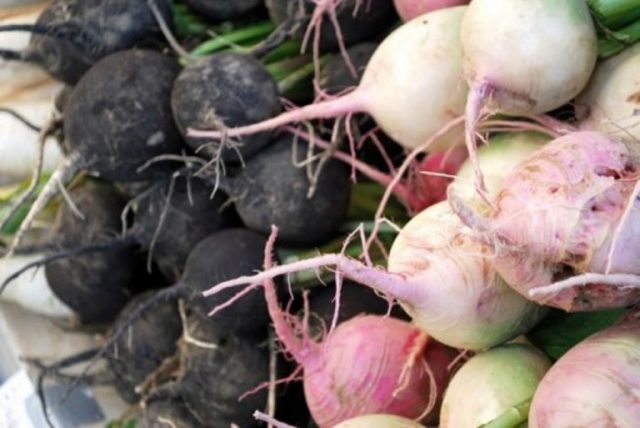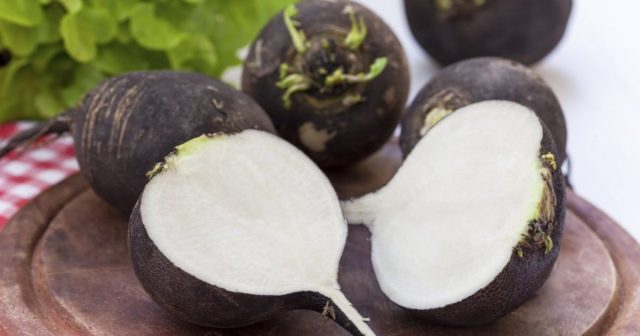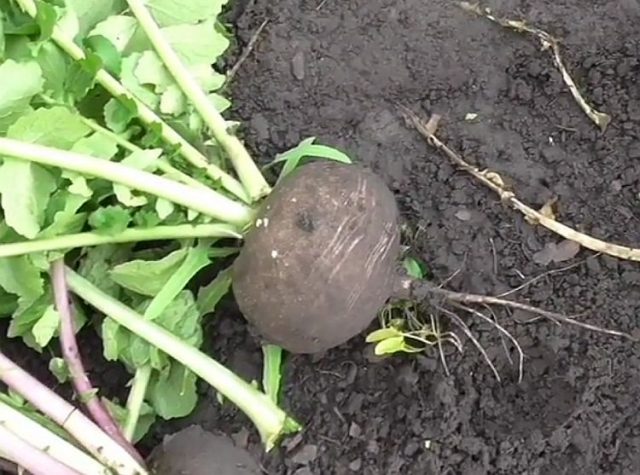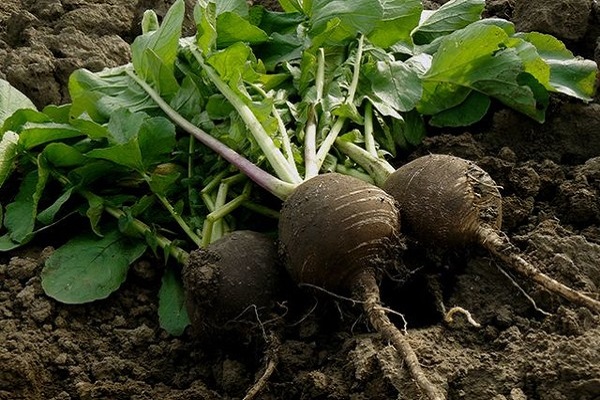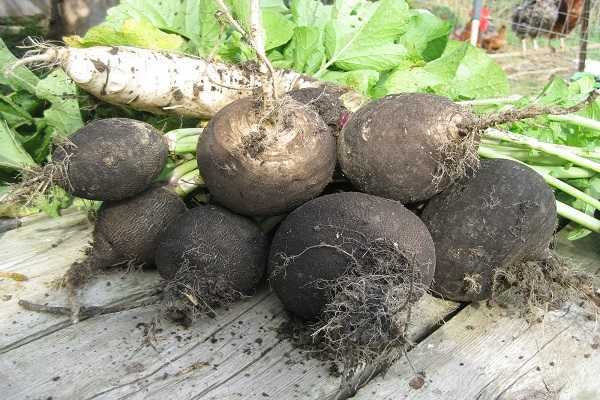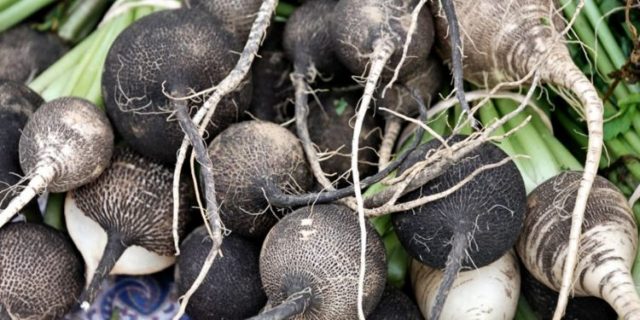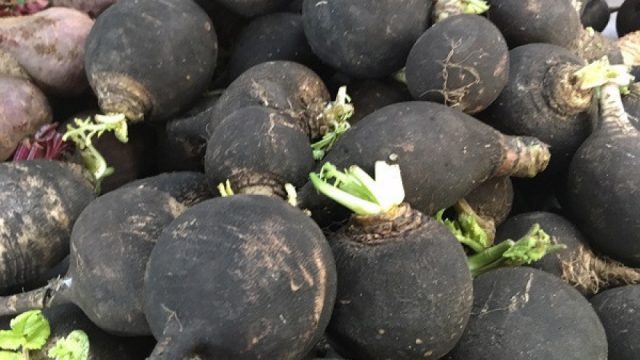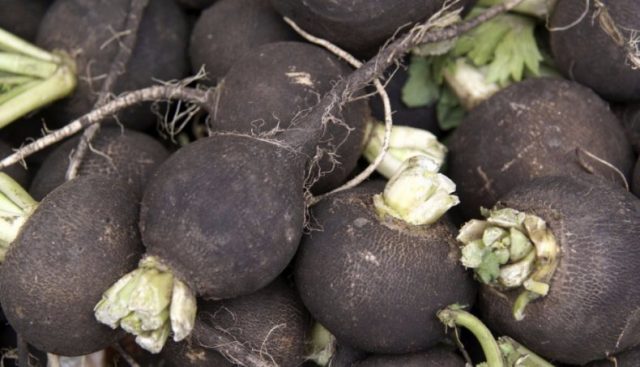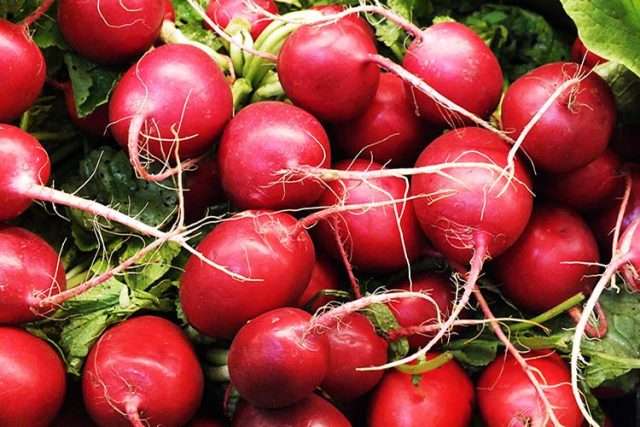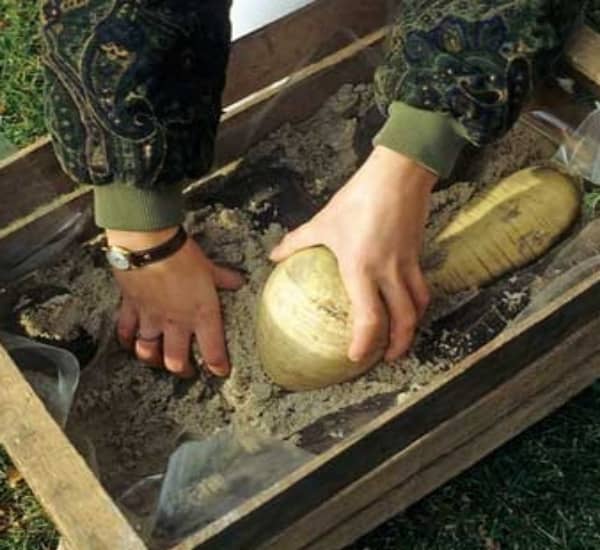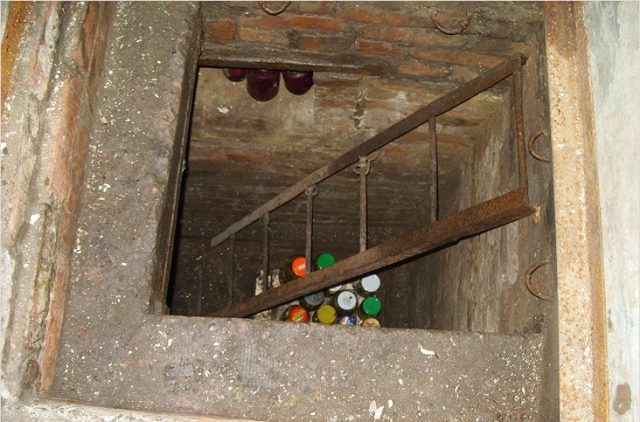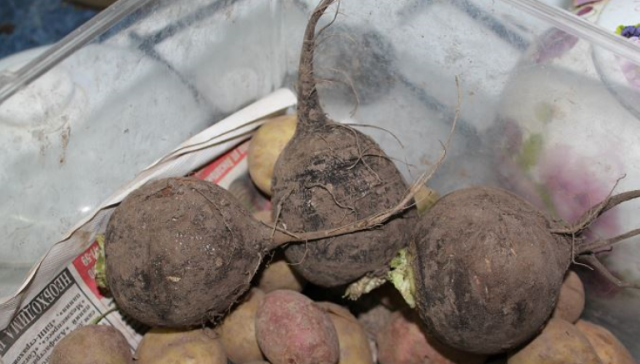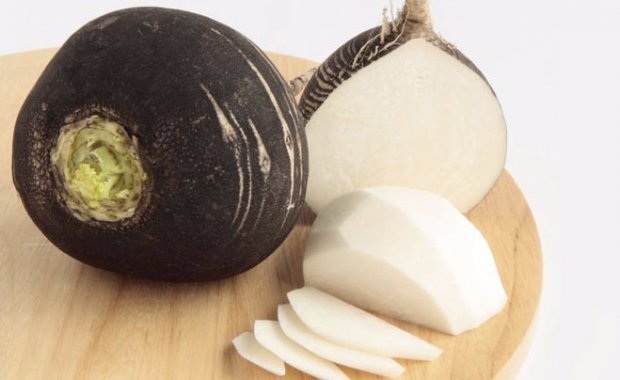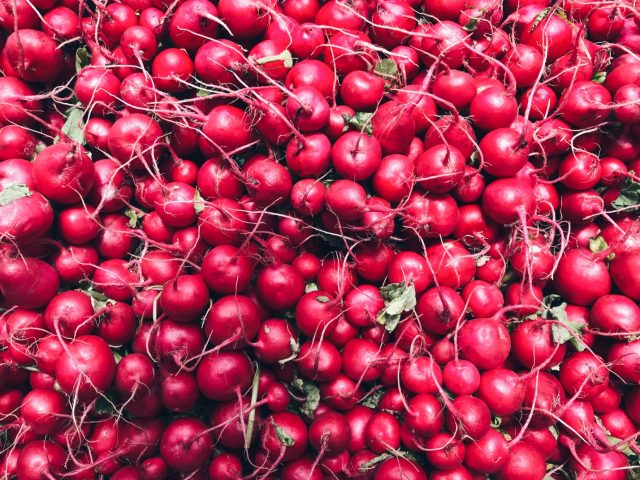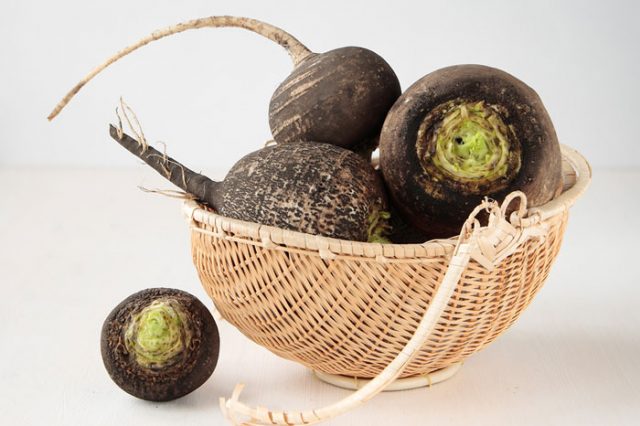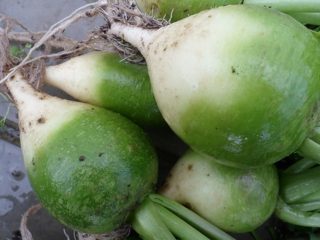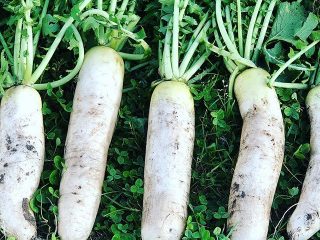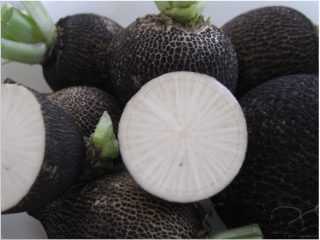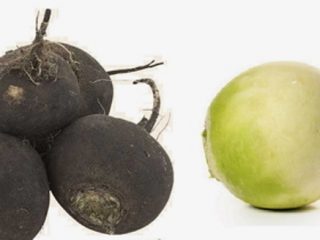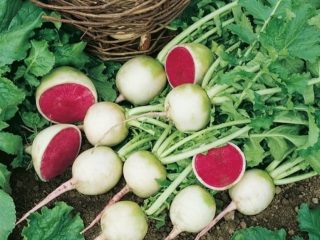Content
- 1 When to harvest radishes in 2019
- 2 When to store black radish for winter
- 3 How and where to store radishes
- 3.1 How to store radishes in the cellar in winter
- 3.2 Storing radishes for the winter in the basement
- 3.3 How to store black radish at home
- 3.4 How to store radishes in the refrigerator
- 3.5 How to preserve radishes for the winter in an apartment
- 3.6 How to store peeled radishes
- 3.7 Storing radishes in bags
- 3.8 Is it possible to store radishes in sawdust?
- 3.9 Canning as a storage method
- 4 Conclusion
You can grow a good harvest of radish, and then quickly ruin it simply because the root crops were dug up at the wrong time or placed in the wrong place. Also, don’t expect white varieties to last all winter. Radishes need to be harvested and stored correctly, based on the biological characteristics of the varieties. You can always adapt your own conditions to the requirements of culture, and in a city apartment this is not much more difficult to do than in the private sector.
When to harvest radishes in 2019
One type of radish is used for food - Sowing or Garden radish (Raphanus sativus), which is an annual or biennial plant, originating from Asia and not found in the wild. Within the taxon there are several edible varieties:
- Chinese (lobo);
- Japanese (daikon);
- black;
- white;
- radish.
They are close relatives, but differ in appearance, growing habits and storage. The taste and chemical composition of root vegetables, although similar, are not identical.
All varieties are short-day plants and are prone to bolting. Radishes are planted and harvested first - they have the shortest growing season. Root vegetables are eaten immediately after ripening. Radishes can be stored for several days in the refrigerator and cannot be processed.
Daikon and lobo, the roots of which have the most delicate pulp and a sweetish (often with a slight bitter) taste, can last from 1 to 4 months, depending on the variety. They are sown in mid- or late summer and harvested before frost.
White and black radishes have the sharpest taste. The first one is sown very early, harvested in late spring or early summer (after 50-60 days), and stored for no longer than a month. Black varieties are often called winter varieties, planted in mid-summer, dug up before frost. Under favorable conditions, they can lie for up to 8 months.
When to dig up black radish
Since white varieties do not last long, they are removed after the onset of technical ripeness, which is indicated on the seed bags.The main thing here is not to overexpose the crop in the garden, otherwise a flower shoot will form - after its appearance, the root crop becomes hollow and unsuitable for food. It is impossible to preserve white radish for the winter.
When harvesting black varieties, you need to choose the time carefully. Firstly, they must reach technical maturity, and secondly, weather conditions must be favorable for excavation. What makes the task easier is that black radish is a plant with a two-year development cycle. In the first year it sets a root crop, in the second year it forms a flower arrow.
When growing and harvesting radish for winter storage, the following conditions must be met:
- In the southern regions, seeds should be sown by mid-July. In the Urals, Siberia and the Middle Zone - in the second half of June, the deadline is July 10.
- Vegetables grown on black soil, light sandy or loamy soils will be stored best.
- Excess and lack of fertilizers negatively affect keeping quality. Nitrogen can be given only in the first feeding. Potassium increases the shelf life of vegetables - this is what you should focus on when fertilizing the garden bed.
- The time that must pass from germination to harvest is indicated on the seed bags. You should not dig up root crops earlier - they have not yet ripened and will not be stored well. But you can overstay the crop in the garden - with a two-year life cycle, the flower arrow will not wake up at low temperatures. It is better to harvest black radish when there has been no rain for 3-3.5 weeks (naturally, there is no need to water it at this time).
- Root crops can withstand minor frosts without losing their marketable qualities. But they will not be stored for long after being in the ground at subzero temperatures.So the timing of radish harvesting needs to be calculated so that the crop does not get frozen.
Lunar calendar and radish harvesting
There are gardeners who try to do everything according to the lunar calendar. The following information is especially for them. In 2019, the best time to harvest root crops is:
- September – 8, 9, 16-21, 25, 26;
- October – 3-6, 15-19, 22-25.
But what could happen if you thoughtlessly wait until the lunar calendar allows you to harvest vegetables? Lots of troubles:
- An early frost will hit. Then you can forget about the intention to store radishes for the winter. Of course, she will lie down for a while, but she definitely won’t live to see the New Year.
- It will rain. Well, what can you do, on October 14 it was still dry, and on October 15 it started to rain. And loaded it... does it make a difference, for how long? There will be no more favorable days in 3 weeks.
So the poor radish will remain in the ground... Or they will dig it up, in the end, not at all according to the lunar calendar, but after frost or rain - it’s autumn after all. Isn't it better to rely on the weather forecast and common sense?
Cleaning dates in the regions
It is impossible to name the harvesting time for storage of black radish for different regions with an accuracy of date. It depends on the variety, sowing time, and weather forecast. But general recommendations can be given.
When to harvest radishes in the Urals in 2019
Black radishes in the Urals need to be harvested as soon as the roots ripen and cool, dry weather sets in.It is better to choose varieties with the shortest growing season, so that there is room for maneuver - the climate in the region is unpredictable, you cannot rely on weather forecasters.
It is advisable to focus on September, although in the Urals the weather usually allows for cleaning in mid-October. But at this time, rains are possible, which will not provide a dry “window” of 3 weeks before the first frost, which will significantly reduce shelf life.
When to harvest radishes in the middle zone
In the middle zone, the harvest needs to be done in early October. At the same time, one should not forget about the long ripening period of the crop and choose the appropriate varieties.
When to dig radishes in the Moscow region
If you look at the frost resistance zones of plants, Moscow and the Moscow region are a warm island surrounded by colder territory. Why this happened, let scientists figure it out. But radishes in the Moscow region can be collected until the end of October, as in Kyiv or Astrakhan.
When to dig up black radish in Siberia
In the cold climate of Siberia, radishes must be harvested before the beginning of October. Under such conditions, many varieties may simply not have enough time to reach maturity. Those who do not want to limit themselves in choice can grow the crop through seedlings - round root crops, for the most part, will safely survive transplantation. This is a troublesome matter, but quite possible.
When to store black radish for winter
Storing vegetables often takes longer than growing them. During the growing season, they accumulate useful substances and then spend them. During storage, vegetables continue to live - they breathe, absorb and evaporate moisture, and two-year-old vegetables prepare for the next season.
In order for root crops to last for a long time, it is necessary to create conditions under which the loss of nutrients, mass and other consumer qualities is minimized. To do this, the radishes are cut off and cleared of soil before storing.
If there was no choice, and root crops had to be dug up in wet weather, they need to be dried. Vegetables are laid out in a cool, dark, well-ventilated area for a period of several days to a week. This way they will not only give up excess moisture, but also cool down if necessary. During this time, scratches or minor damage on the top of the root crops will heal, and they will not have to be discarded.
Then the radishes intended for storage at home for the winter are sorted out, putting aside all the root crops unsuitable for this. Among them may be:
- too small;
- with severe mechanical damage in any part;
- affected by rot or mold;
- with minor scratches and cuts on the bottom;
- damaged by pests;
- with deformed roots.
The storage area must be ventilated, cleaned, disinfected and whitewashed. Only after this can the vegetables be put away in the cellar or basement.
How to trim a radish
The tops cannot be left during storage - they actively evaporate moisture and the shelf life is sharply reduced. In addition, nutrients move from the roots to the leaves to increase their vitality.
The tops are trimmed, leaving columns of 1-1.5 cm. Roots that are too long, broken or dried out can be shortened, it is better not to touch even and undamaged ones.
Do I need to wash radishes before storing?
Before storing black radishes, do not wash them.If the root crops are too dirty, which only happens when dug up after rain or watering, they are first dried. After this, the remaining soil is carefully removed with a soft cloth. Do not rub or use a brush vigorously - this will damage the peel and reduce shelf life.
How long does radish last?
Why is it possible to preserve black radishes for the winter, but not white ones? It's a matter of timing. All late-ripening fruits and vegetables are stored for a long time, medium-ripening ones are stored for a short period of time, and early-ripening ones cannot be stored at all.
If you arrange the varieties of seeded radish according to keeping quality, starting with the most perishable, you will get the following sequence:
- radishes – up to 2 weeks;
- white – up to 1 month;
- daikon – up to 2 months;
- lobo – up to 4 months;
- black – up to 8 months.
The maximum shelf life of the most shelf-stable varieties is indicated. Naturally, in suitable conditions, observing temperature conditions and optimal humidity.
How and where to store radishes
The shelf life of radishes directly depends on how suitable conditions have been created for it. The following are considered ideal:
- humidity 90-95%;
- temperature 1-2⁰ C;
- lack of light;
- limited air access.
How to store radishes in the cellar in winter
The cellar is ideal for storing vegetables. It is believed that radishes can be stored in it directly on the floor, in a large pile. But this root vegetable does not like active air ventilation. If the room is opened frequently, the top layer of vegetables will become rough and fibrous.
It is better to store black radish in the winter in a cellar, laid out in wooden boxes and covered with damp sand.The substrate needs to be watered from time to time, and the root crops must be sorted. One spoiled vegetable can contaminate the entire drawer.
Storing radishes for the winter in the basement
The basement is not always suitable for storing vegetables. If it is easy to maintain the required temperature, there is no problem. Radishes are placed in boxes with sand and placed away to limit access to light. To maintain high humidity, buckets of water are placed nearby, and the substrate is regularly checked and moistened.
But keeping it warm is detrimental to culture. Even a temperature of +5⁰ C significantly reduces keeping quality. Therefore, the storage time is often called not 8 months, but 200-210 days. If there is an outlet in the basement with access to the street, it is worth placing a box near it to reduce the temperature.
How to store black radish at home
City dwellers often do not have a basement or cellar. They have to store supplies in the apartment.
How to store radishes in the refrigerator
You can often come across advice to store radishes in the refrigerator. Great tip for using up the root vegetables in a month. It should be taken into account that in the vegetable department the temperature is the highest, and often fluctuates between 4-6⁰ C, but often reaches 9⁰ C. This is unacceptable for long-term storage of radish.
And if you lower the temperature in the vegetable department, it will become even lower on the remaining shelves. It will become impossible to store other products there.
And one moment. How many root vegetables can you put in the bottom section? And where should I put the cut cabbage, apples, oranges and other fruits or vegetables?
How to preserve radishes for the winter in an apartment
It is best to store radishes on glazed balconies or loggias in wooden boxes with wet sand. You just need to provide protection from overheating, especially on the south side. You can curtain the glass with foil or reflective film, and regulate the temperature by opening or closing the windows and the door to the room.
In severe frost, the box is covered with an old blanket, outerwear, or insulated in another way. It is important not to overdo it; to control the temperature, place a thermometer designed for outdoor use between the root crops.
Humidity can be maintained by wetting the sand. The shelf life of radishes will be longer, the closer to the ideal temperature on the balcony.
How to store peeled radishes
Peeled radishes cannot be stored for a long time; moreover, when exposed to air, they quickly darken and become soft. You need to remove the peel from the root vegetable immediately before use. As a last resort, fill the radish with cold water and put it in the refrigerator.
Storing radishes in bags
You can store radishes in thick polyethylene bags in the basement, cellar or on the balcony. The bag is filled no more than 3/4 full and left open. At the same time, the humidity in the room can be 80-85%. In a plastic bag it will be higher, and the high concentration of carbon dioxide will increase the safety of root crops.
Radishes are stored in thick plastic bags. Some varieties can withstand even a month, and then become hollow, but remain solid. It is these radishes, harvested unknown when, that are often sold in supermarkets and at the market.
Is it possible to store radishes in sawdust?
Quite often you can come across advice to store vegetables in sawdust. Such a recommendation can only be given by a person who has little understanding of the properties of crushed wood. Sawdust contains a large amount of carbohydrates and some nitrogen. When moistened, they begin to rot and produce heat. If you wet them, the process will happen quickly. Sawdust left dry will take away the moisture they need from the root crops and rot slowly.
As a result, the radish will spoil, and given the presence of nitrogen, this will happen very quickly.
Canning as a storage method
If you have nowhere to store radishes, you can pickle and ferment them. It doesn't go well with other vegetables. Radish salads are, frankly speaking, “not for everybody.” But you can make jam from it with honey and nuts or dry it in the oven.
Conclusion
Radishes must be harvested and stored taking into account the characteristics of the culture. The white one is suitable for immediate consumption, the black one can last up to eight months if the root crops are provided with suitable conditions.

